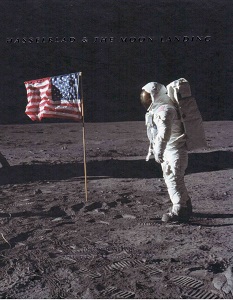Space aficionados will know that the camera of choice for the Apollo Moon missions was the Hasselblad 500EL, a bulky, large-format camera that captured the pictures which have graced many a magazine and book cover in the past half century.
This little book “looks at the history of the Apollo 11 program through the lens of the Hasselblad 500EL” and, for a well-produced hardback, is remarkably good value at £9.99. Following a short historical introduction, the book introduces Victor Hasselblad, who made his name in WWII making aerial cameras for the Swedish Air Force. Following the use of Hasselblads on the Mercury and Gemini missions, a version was developed for Apollo.
Although the technical descriptions are brief, the book contains some interesting design aspects of the lunar camera, with details of the Réseau plate (that produced the hairline crosses on the surface images), the issue of static electricity and the 200-exposure film. Any modern-day photographer who has been let down by a digital camera in very low temperatures will appreciate the challenge (albeit non-digital) of operating a camera in the lunar environment.
The initial ambivalence about photography on the Apollo missions – the science was more important! – comes across well in this book. As Buzz Aldrin revealed, there was very little input from NASA’s public affairs people, but the pictures “became the storyboard of our adventure”. Can we now imagine Apollo 11 without the iconic photos?
Perhaps fittingly, but in truth because of weight restrictions, there are still two Hasselblads on the Sea of Tranquillity (and 10 others elsewhere). One wonders when they will be picked up again and whether – perhaps with a little care and attention – they might even work. I like to think that they would.











